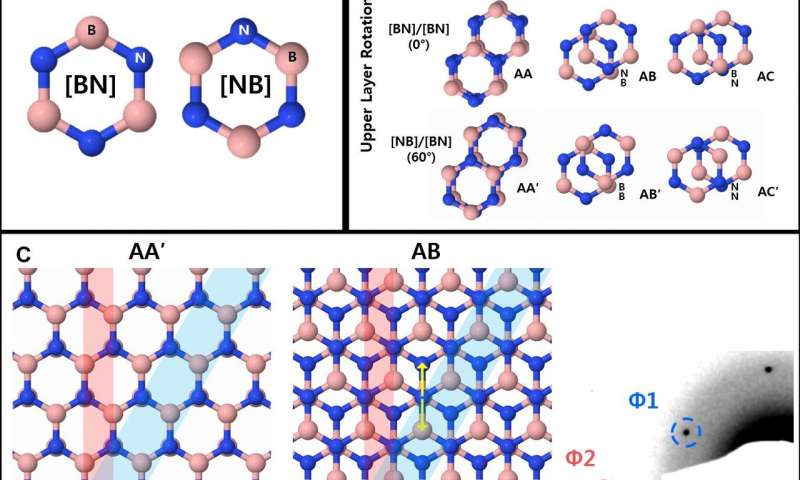In the field of 2-D electronics, the norm used to be
that graphene is the main protagonist and hexagonal boron nitride
(hBN) is its insulating passive support. Researchers of the Center
for Multidimensional Carbon Materials (CMCM) within the Institute
for Basic Science (IBS, South Korea) made a discovery that might
change the role of hBN. They have reported that stacking of
ultrathin sheets of hBN in a particular way creates a conducting
boundary with zero bandgap. In other words, the same material could
block the flow of electrons, as a good insulator, and also conduct
electricity in a specific location. Published in the journal
Science Advances, this result is expected to raise interest in hBN
by giving it a more active part in 2-D electronics.
An ultimate one-dimensional electronic channel in hexagonal
boron nitride




